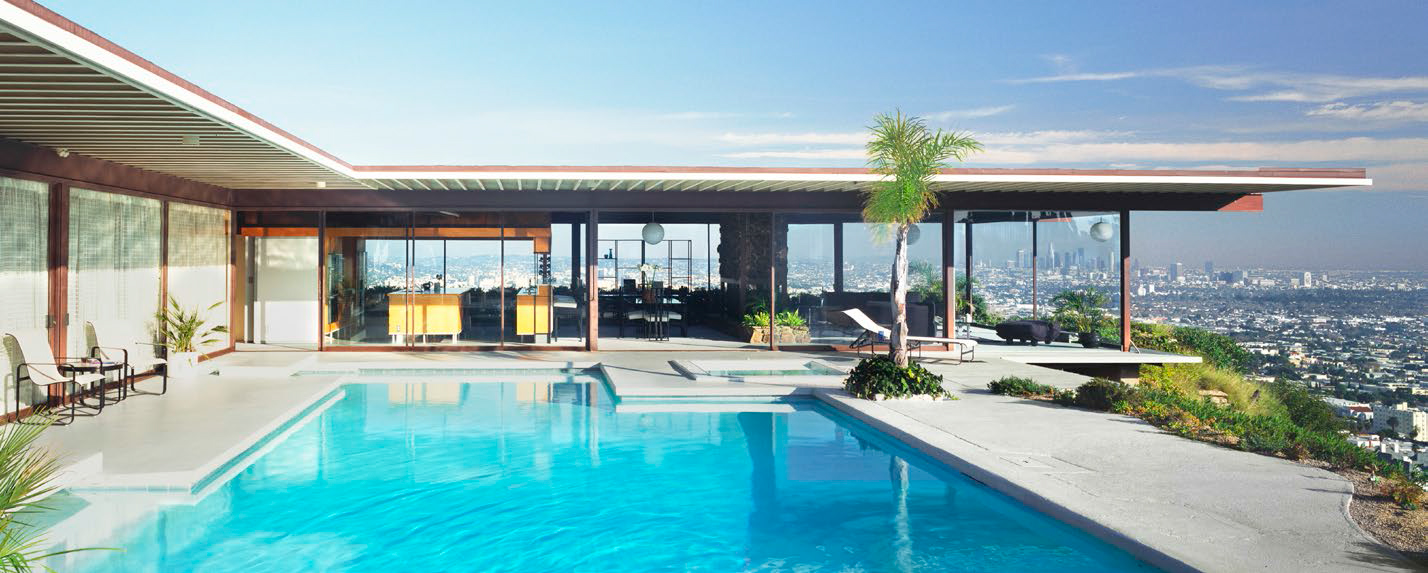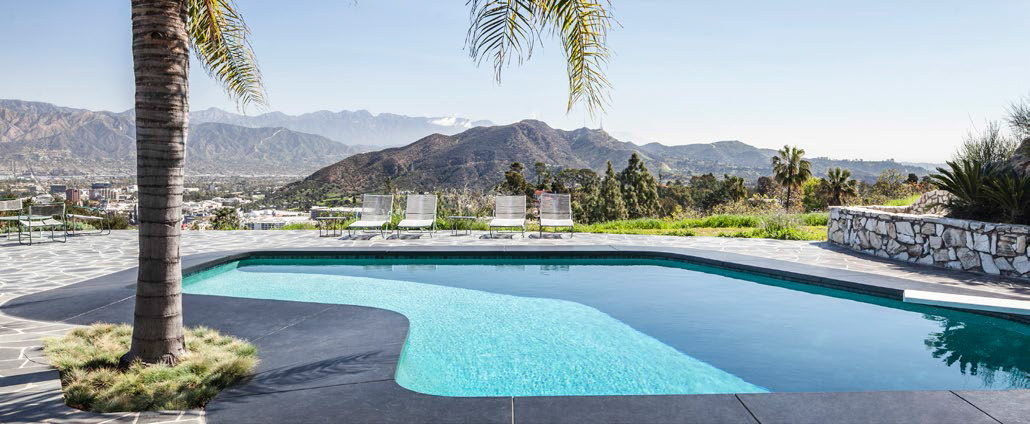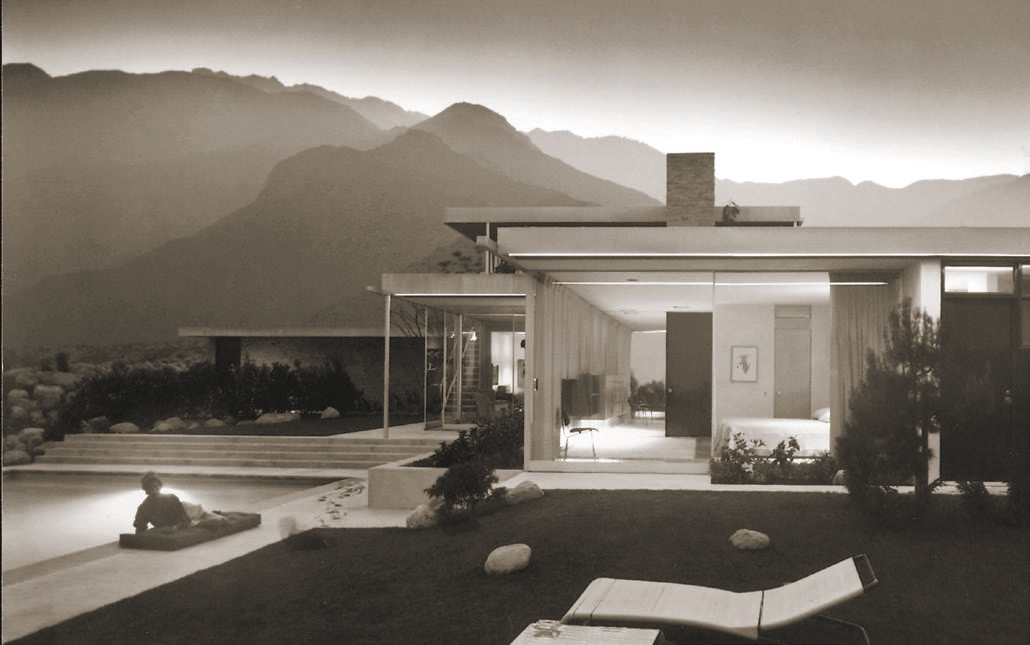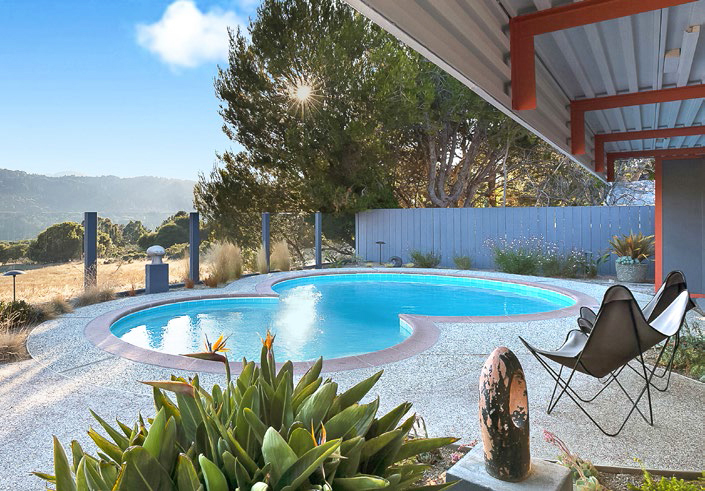Splash! - Page 2
 |
 |
|
|
 |
|
|
 |
|
|
 |
|
|
But gunite did not take off till the mid-1940s, making the construction of in-ground pools much cheaper than using stone. At the start of the 1940s, California pool builder Paddock Engineering Co., which pioneered the material's use, was bragging that "our improved methods of construction have really brought swimming pools within reach of everybody."
By the late 1940s, just as GIs were settling down with their new families into their first homes, pools began popping up all over California.
"By the mid-1950s, the nation seemed in the grip of swimming pool fever," Jennifer A. Watts, the curator of photographs at the Huntington Library in San Marino, wrote in an essay collected in the exhibit catalog Swimming Alone: the Backyard Pool in Cold War California.
The 2012 exhibit was at the Palm Springs Art Museum.
In 1950, the United States had 10,000 backyard pools, she reported. By 1959 that number had soared to 175,000. Moreover, the Golden State was reaping the lion's share. "In 1955," she wrote, "half of all new pools built were built in California."
Historian Ryan Reft wrote that "by 1961…no other region in America boasted more swimming pools than Southern California. In 1966, over 150,000 swimming pools accounted for seven-and-one-half square miles of the region's real estate."
The climate had a lot to do with California's leadership in backyard pools, and so did the lack of public parks in Los Angeles, historians have written.
But so did the modern style of housing, with glass-walled interiors that looked out onto yards with sliding doors for easy access. Ryan Murtha, a PhD. candidate in physical therapy and sports management at the University of Texas, has cited Southern California architect Cliff May as easing the way for a plethora of backyard pools by using the backyard "as a more direct extension of the house, as a room unto itself instead of something separate."
Of course that's exactly what Joe Eichler was doing from the start of the 1950s. Eichler did not include swimming pools with his tract homes, though he built a few community center pools in his developments. But in 1951, when he built a home for himself in Atherton, its living area and master bedroom looked out at an expansive pool that was the centerpiece of the backyard.
One of the Eichler tract homes that did come with an Eichler-built pool was also one of his more unusual homes—the all-steel X-100 of San Mateo Highlands. Built in 1956 as a vision of the house of the future, naturally it would include a pool visually integrated into the home.
Eichler certainly came to understand the value of the backyard pool, even if he didn't build many of them himself. For a community in the late 1960s, Walnut Grove in Walnut Creek, his brochure bragged that "every lot has ample space for a pool."
By the late 1940s, modern pools in modern settings were attracting attention. A 1946 desert home by Neutra, the Kaufmann House, featured a pool that became world famous thanks to a photo by architectural photographer Julius Shulman.




